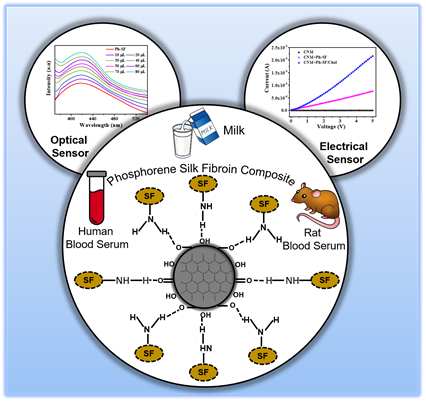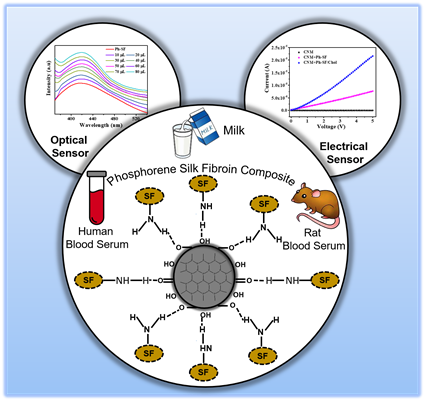A highly sensitive, ecofriendly and cost-effective optical sensing platform developed for cholesterol detection can help identify early symptoms of diseases like atherosclerosis, venous thrombosis, cardiovascular diseases, heart disease, myocardial infarction, hypertension, and cancer.
Detecting fatal diseases at their earliest symptoms is essential, as abnormal biochemical markers may sometimes accompany such disorders. Therefore, reliable point-of-care (POC) detection of biomarkers associated with these diseases is necessary for personalized health monitoring.
Cholesterol is an essential lipid in humans, produced by the liver. It is the precursor for vitamin D, bile acids, and steroid hormones. Cholesterol is necessary for animal tissues, blood, and nerve cells, and it is transported by blood in mammals. There are two types of cholesterol: LDL (low-density lipoprotein), often referred to as ‘bad’ cholesterol because it can accumulate in the walls of arteries and contribute to severe diseases, and HDL (high-density lipoprotein), known as ‘good’ cholesterol.
However, maintaining a balance in cholesterol levels is crucial. Both high and low cholesterol levels can lead to various diseases, including atherosclerosis, venous thrombosis, cardiovascular diseases, heart disease, myocardial infarction, hypertension, and cancer. Atherosclerotic plaques form when excess cholesterol builds up on artery walls, hindering proper blood flow.
A team of interdisciplinary researchers at the Institute of Advanced Study in Science and Technology (IASST) in Guwahati, an autonomous institute under the Department of Science and Technology (DST, has developed an optical sensing platform for cholesterol detection based on silk fibre functionalized using phosphorene quantum dots.
A point-of-care (POC) device has been developed in the laboratory scale for detecting cholesterol using this. It can sense cholesterol in trace amounts, even below the preferred range. It can be an efficient tool for routine monitoring of cholesterol levels in the human body.
The project, led by Prof. Neelotpal Sen Sarma, a retired Professor; Dr. Asis Bala, an Associate Professor; and Ms. Nasrin Sultana, a DST INSPIRE Senior Research Fellow incorporated the material – the silk fibre, into a cellulose nitrate membrane to create an electrical sensing platform for cholesterol detection.

Fig: Schematic representation of the work done on the detection of cholesterol based on silk fiber functionalized phosphorene quantum dots.
The synthesized sensors were highly sensitive as well as selective for cholesterol detection. Furthermore, the electrical sensing platform generates no e-waste, a key advantage of the fabricated device. Both sensing platforms respond similarly to real-world media such as human blood serum, experimental rat blood serum, and milk. The work was published in the “Nanoscale” Journal, published by Royal Society of Chemistry.
Publication: https://doi.org/10.1039/D4NR03945A
For further correspondence: Prof. Neelotpal Sen Sarma, Retired Professor, Ex HoD, Physical Science Division, IASST Guwahati, Email: dr[dot]neelot[at]gmail[dot]com






